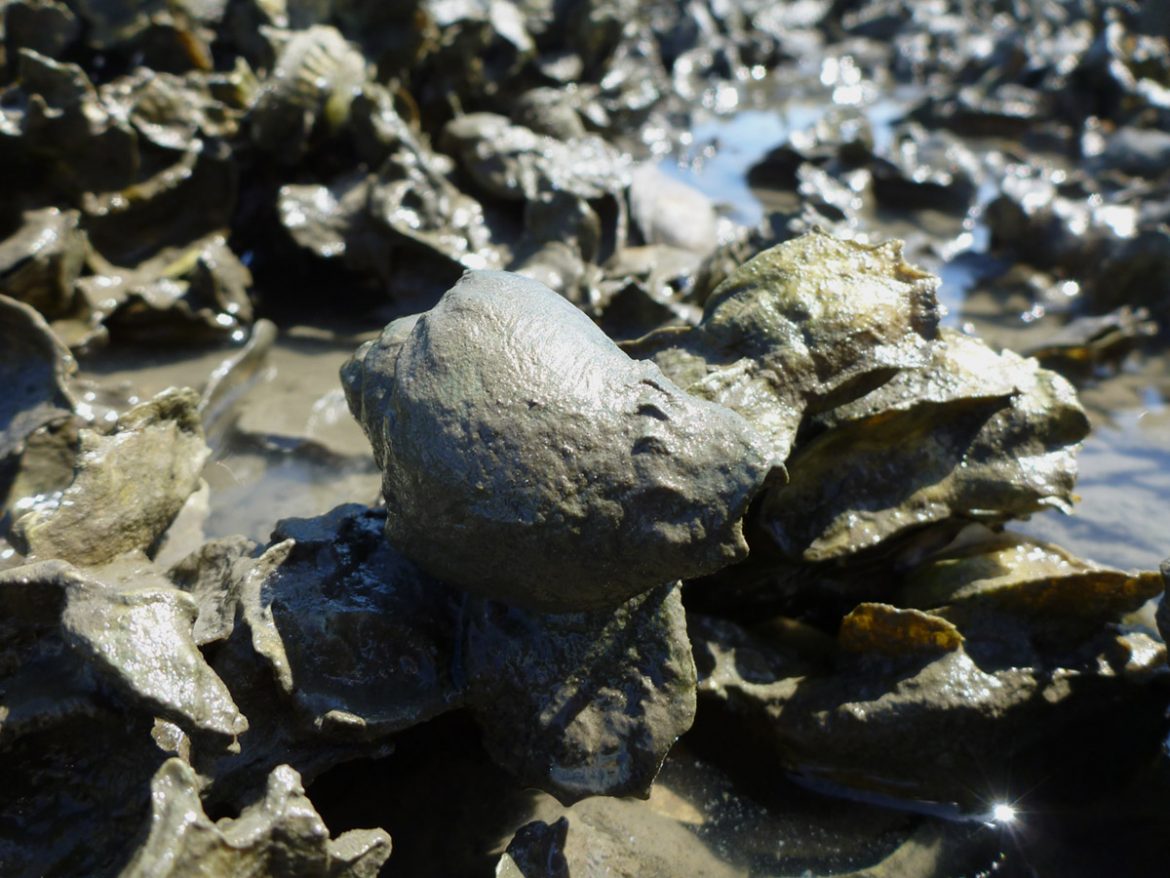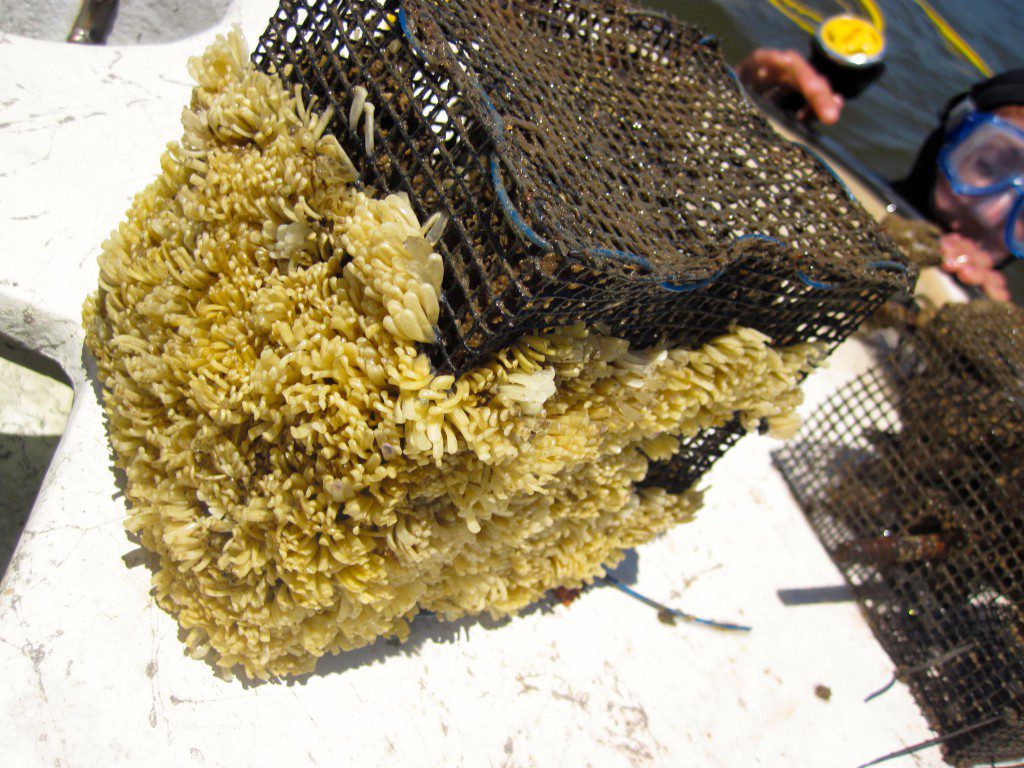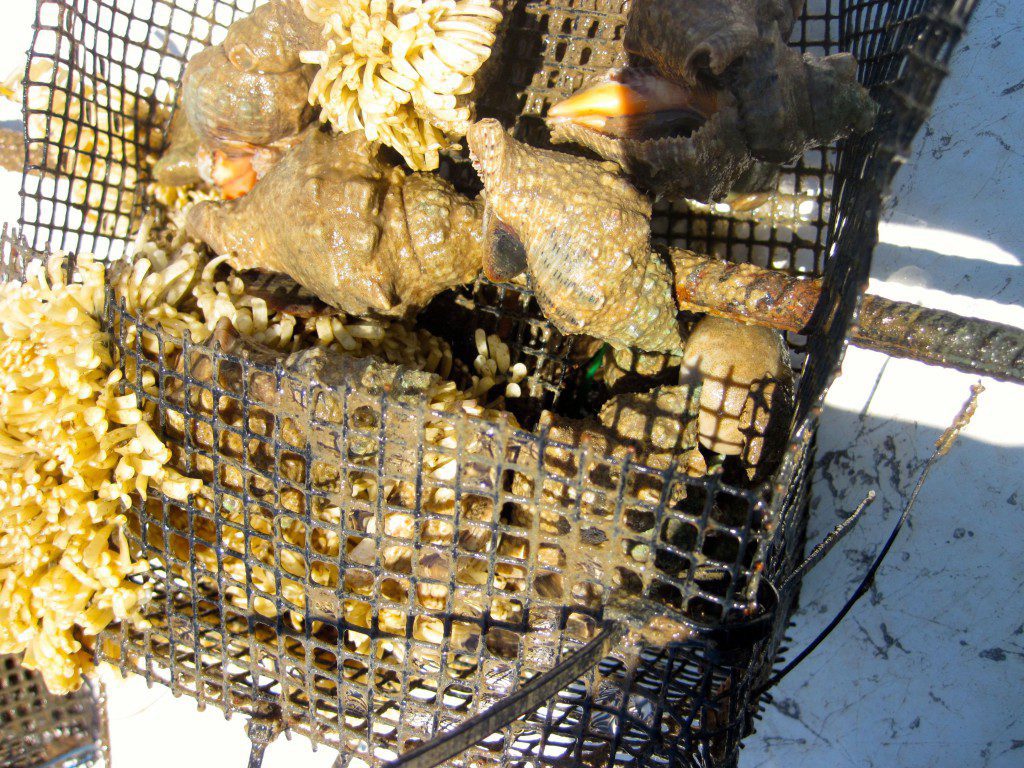Oyster reefs are a critical estuary ecosystem, sheltering numerous marine species at different times in their life cycles. This list of species is not comprehensive; rather, these are some of the more common animals found in a north Florida intertidal oyster reef. Unlike the fully submerged reefs that are more often commercially harvested, intertidal reefs are only under water part of the time, exposed at low tide.
We spent four years (2010-2014) covering oyster reef ecology for our National Science Foundation funded In the Grass, In the Reef series. This series followed the research of Dr. David Kimbro and Dr. Randall Hughes into the effects of predators on oyster reef ecology. You can find links to individual stories related to the individual species.
Contents
- Foundation Species- The American Oyster
- Oyster Reef Predators
- Oyster Consumers
- Other Species on and Around Oyster Reefs
Foundation Species
American Oyster (Crassostrea virginica), also known as the Eastern Oyster
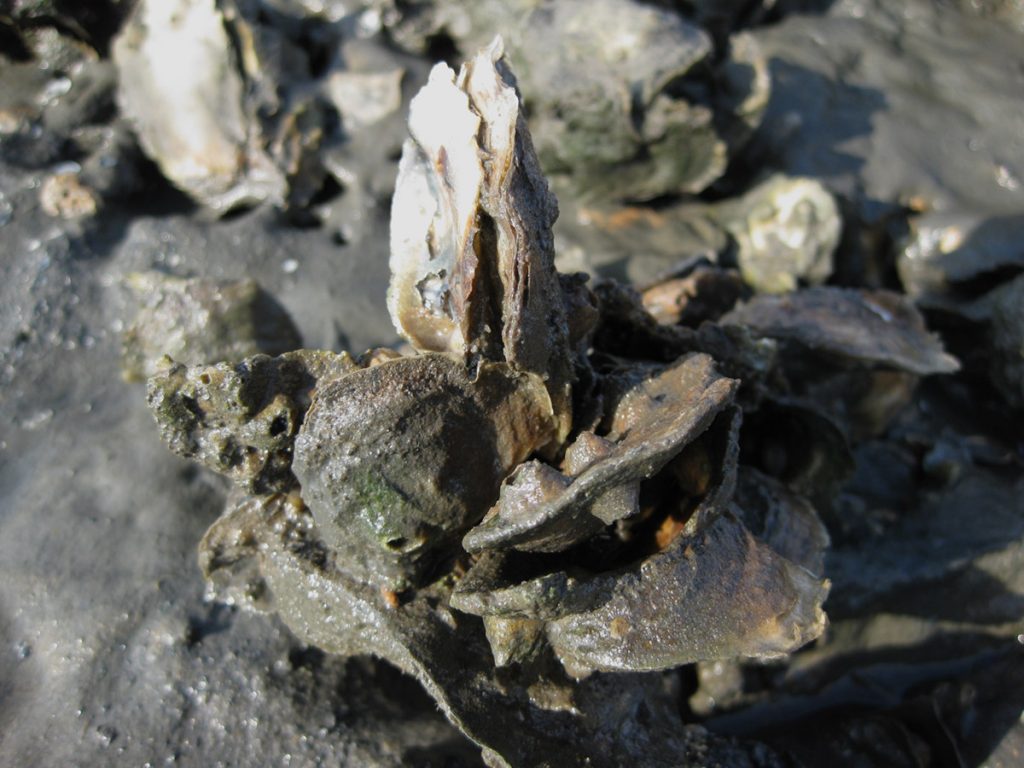
Just as smooth cordgrass is the foundational species of a salt marsh, the oysters that form a reef create an ecosystem. Oysters can grow on any hard surface in the intertidal zone, though larval oysters seek out the chemical signature of other oysters, landing on their shells. Once a larval oyster recruits to a surface, it is called spat. As oysters build their shells on other oyster’s shells, they create a reef structure which benefits the oysters as well as the many species that seek refuge within it.
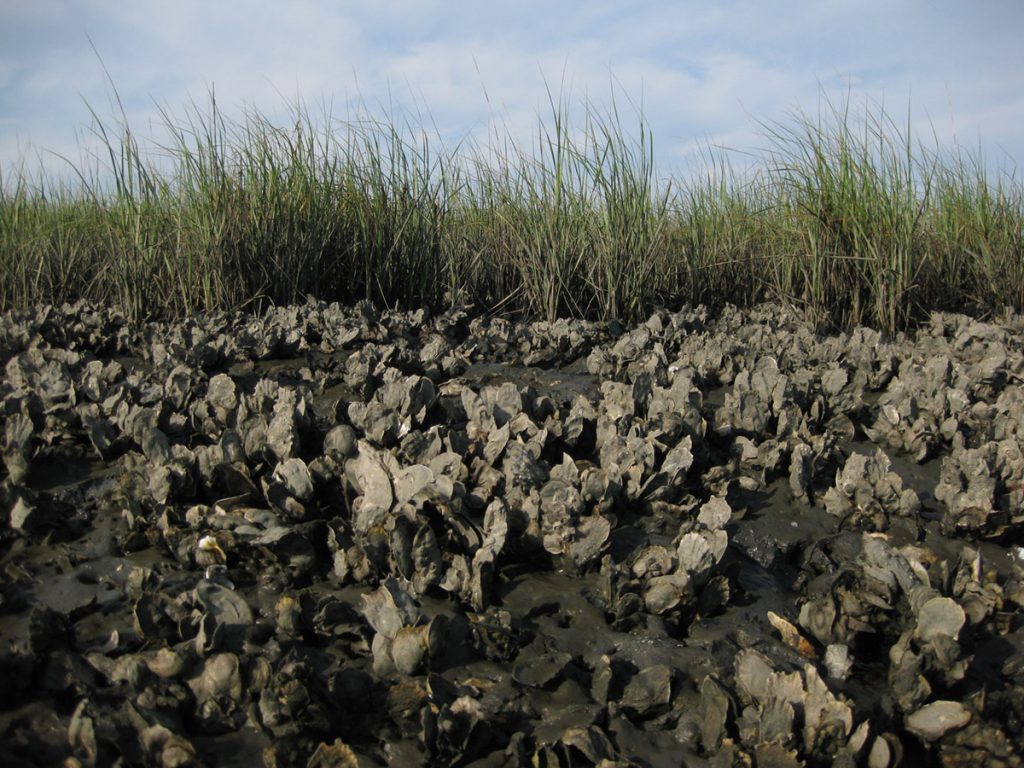
The reef provides shelter for a number of predators and prey, and oysters themselves are prey of animals like the mud crab and the oyster drill (and humans). The oyster is a filter feeder, consuming phytoplankton swimming in the water. Through that process, the oyster removes nitrogen from the water, helping to prevent algal blooms that harm other marine animals.
Oysters have a special cultural and economic significance to residents of Florida’s Forgotten Coast; specifically, Apalachicola oysters highly regarded for their flavor. In 2012, low river flows caused the collapse of the Apalachicola Bay oyster fishery. David Kimbro and his crew looked into the specific causes of the collapse, finding that the lower freshwater input created a higher salinity environment. This in turn caused an increase in predatory snail breeding, specifically among crown conchs and oyster drills. Crown conchs were found in greater numbers in the intertidal reefs, while oyster drills thrived more in the commercially harvested subtidal reefs.
Top Oyster Reef Predators
Predators serve an important role on oyster reefs, eating oyster consumers and helping to limit their numbers. What David and Randall have been investigating is whether fear might have an even greater effect on consumers. While a single catfish might eat a single mud crab, its chemical signature can scare several more mud crabs, and keep them from feeding on oysters for fear of being eaten.
Hardhead Catfish (Arius felis)
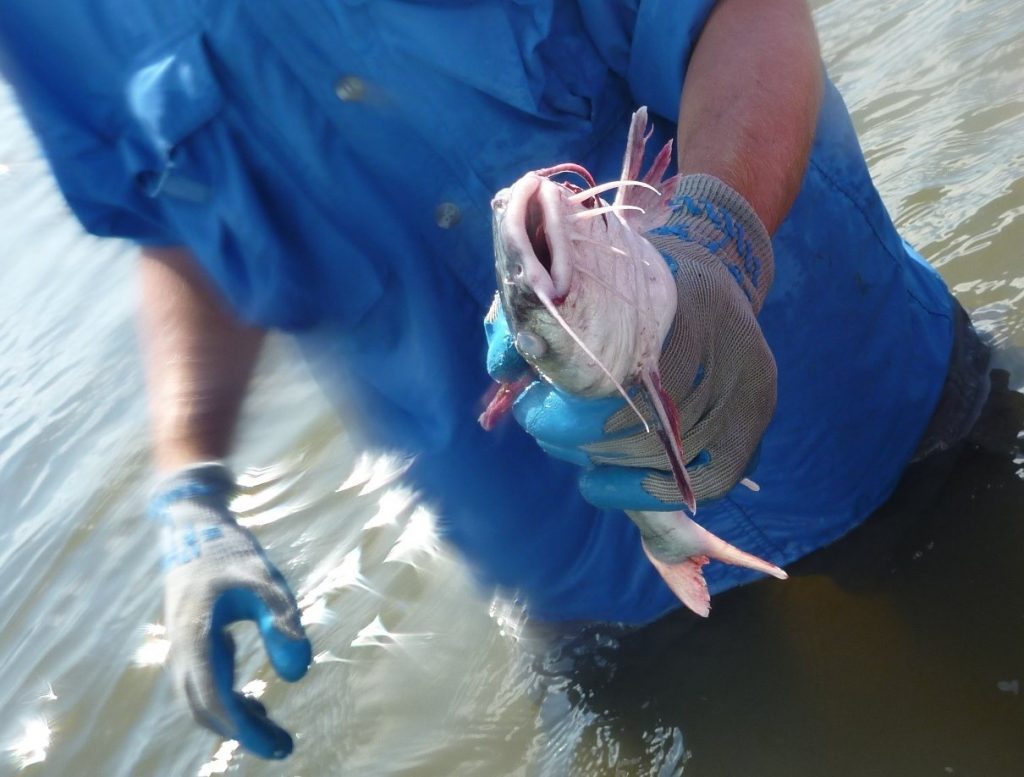
In north Florida, catfish are dominant predators in the oyster reef ecosystem. Its whiskers, known as barbels, are used to find small fish, crabs, and shrimp. On north Florida oyster reefs, their primary importance is as a predator of mud crabs. By eating and scaring mud crabs, they regulate the crab’s ability to consume oysters.
Sail Catfish (Bagre marinus) also known as the Gafftopsail catfish
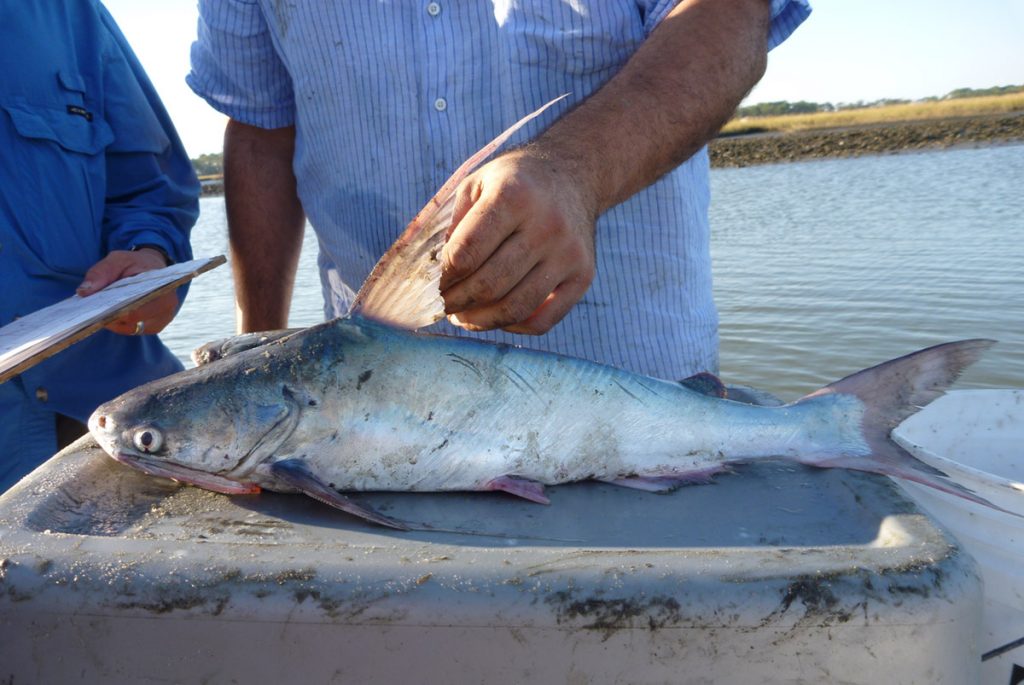
Similar to the Hardhead catfish, the gafftopsail is distinguished by its venomous spines. Also like the hardhead, it is an omnivore with a preference for crustaceans like blue crabs and mud crabs.
Oyster toadfish (Opsanus tau) also known as ugly toad, oyster cracker.
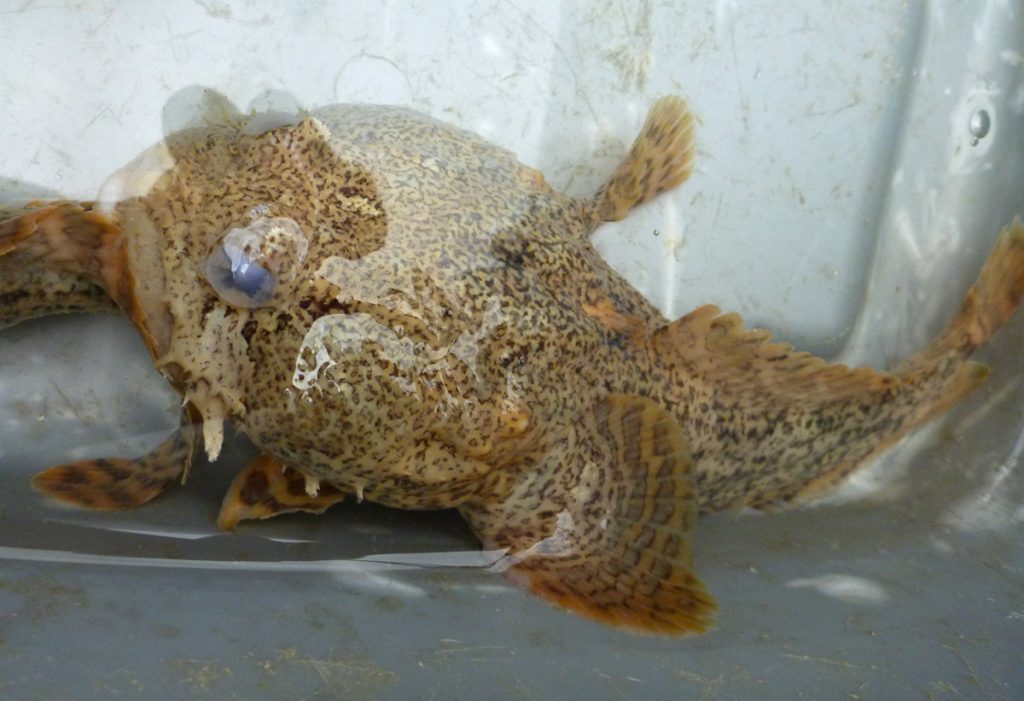
The toadfish is a primary predator of mud crabs on the North Carolina reefs where Dr. David Kimbro and Dr. Randall Hughes began their research careers. Though toadfish are native to Florida waters, Hardhead and Sail Catfish are more usually the dominant predator of north Florida reefs.
These omnivores grow between 30-38 cm, and prefer to eat crabs such as hermits and mud crabs.
Blue crab (Callinectes sapidus)
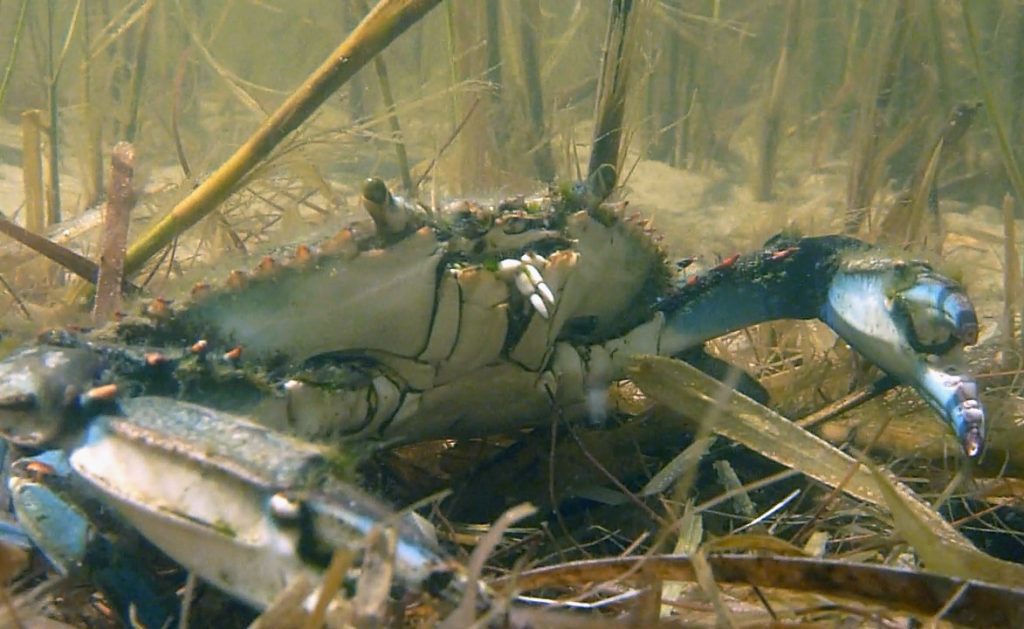
The blue crab is best known as a delicacy, and is the crab used to make Maryland crab cakes. On oyster reefs and in salt marshes, blue crabs are important predators that help control populations of oyster drills, mud crabs, and periwinkle snails.
As we see in a 2010 video, blue crabs molt their shells as they grow. Females can only reproduce when they are soft shelled crabs; their mates protect them until they form a new shell.
Stone Crab (Menippe mercenaria)
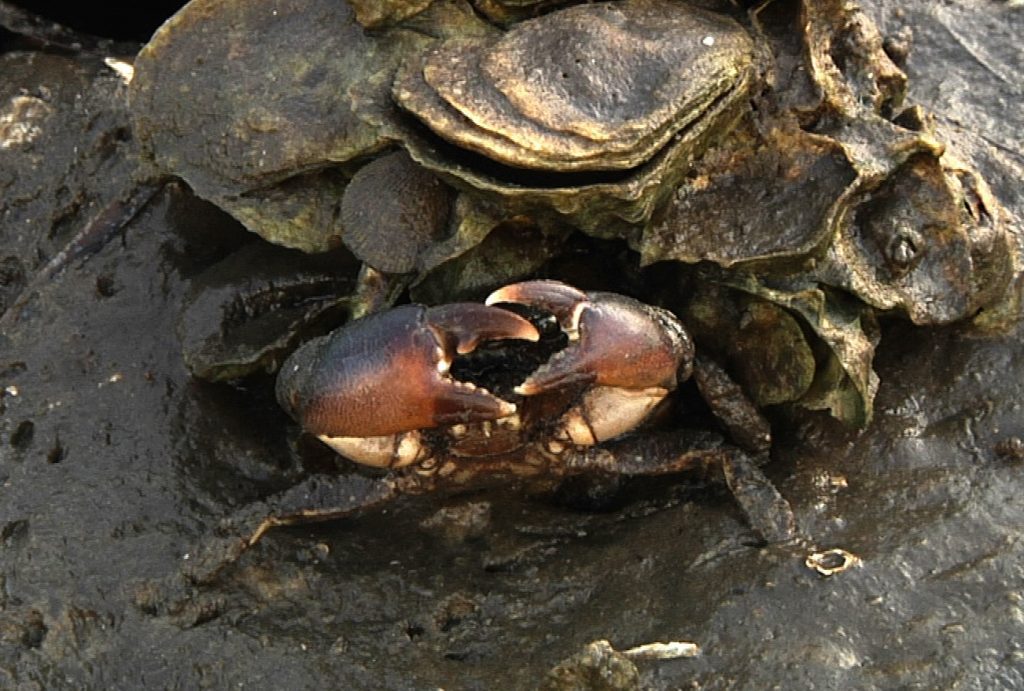
Stone crabs have strong, meaty claws that are used to crush oysters. These claws are eaten by humans and are commercially valuable. Stone crabs also occupy multiple trophic levels on the oyster reef. They eat both oysters- the foundation species of the reef- and many of the oyster’s predators, including crown conchs, mud crabs, and oyster drills.
Stone crabs make their home by crushing a section of oyster reef, creating a burrow within it.
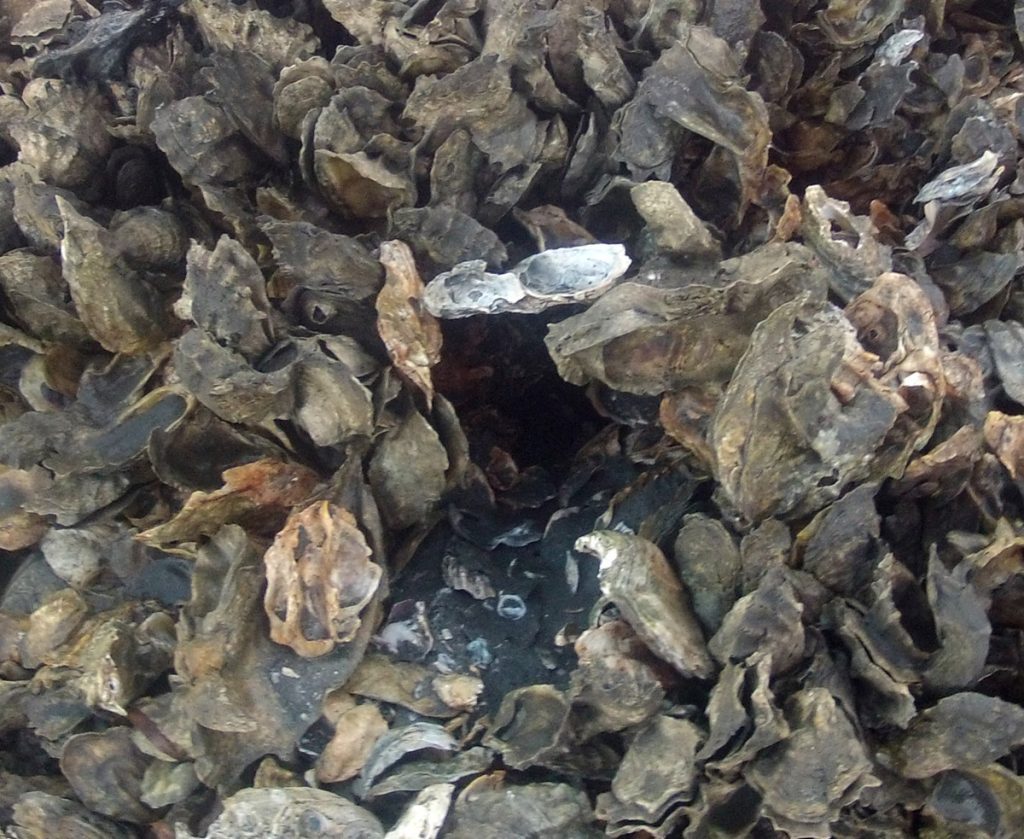
Oyster Consumers
These are the animals that eat oysters. As David and Randall investigate the effects of predator fear on these oyster consumers, they’re also looking at the nonconsumptive effects of consumers on oysters themselves. When oysters sense the chemical signatures of mud crabs or crown conchs in the water, they close their shells and top filtering water, which is how they consume plankton. This filtration is a critical service, as it removes nitrogen rom the water and helps to prevent toxic algae blooms.
Southern oyster drill (Stramonita haemastoma), also known as the red-mouthed rock shell or Florida rock winkle.
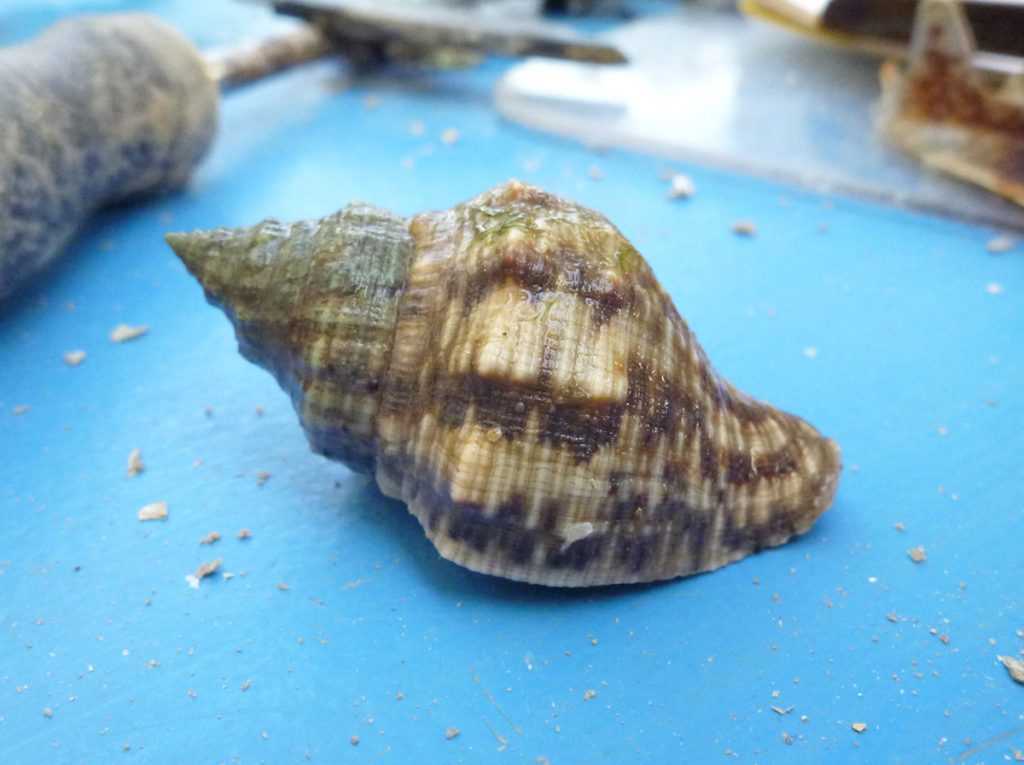
Southern oyster drill numbers in Apalachicola Bay exploded in 2012 as the Apalachicola River experienced historically low river flows, increasing salinity in the bay and making favorable conditions for drills to breed. This was a major contributor to the collapse of the oyster fishery that year. Crown conchs were equally destructive in the bay’s intertidal reefs during this time.
Pictured below are cages from of Dr. David Kimbro’s experiments in Apalachicola Bay, covered in southern oyster drill egg sacs. Each capsule contains 10-20 oyster drills.
Crown Conch (Melongena corona)
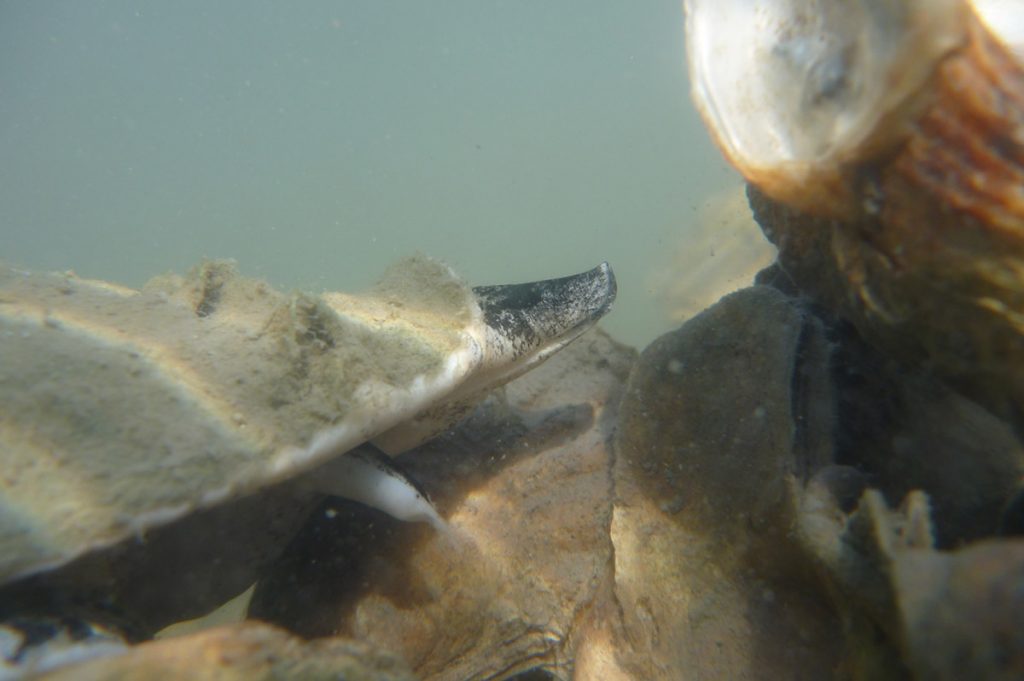
The crown conch is a main predator of the Gulf Coast salt marsh, feeding on periwinkle snails. This helps control periwinkle numbers, benefiting the marsh habitat. Crown conchs play a different role on oyster reefs, consuming oysters by inserting their proboscis between the oyster’s valves.
Conchs thrive in higher salinity water, and can overrun a drought-stricken oyster reef. In Apalachicola Bay, as in Saint Augustine, the crown conch afflicts intertidal oyster reefs. Apalachicola’s commercially harvested subtidal reefs are infested (as of early 2013) with a different snail, the southern oyster drill. You can see a visual breakdown of oyster mortality and predator distribution in the bay following the collapse in this 2013 post.
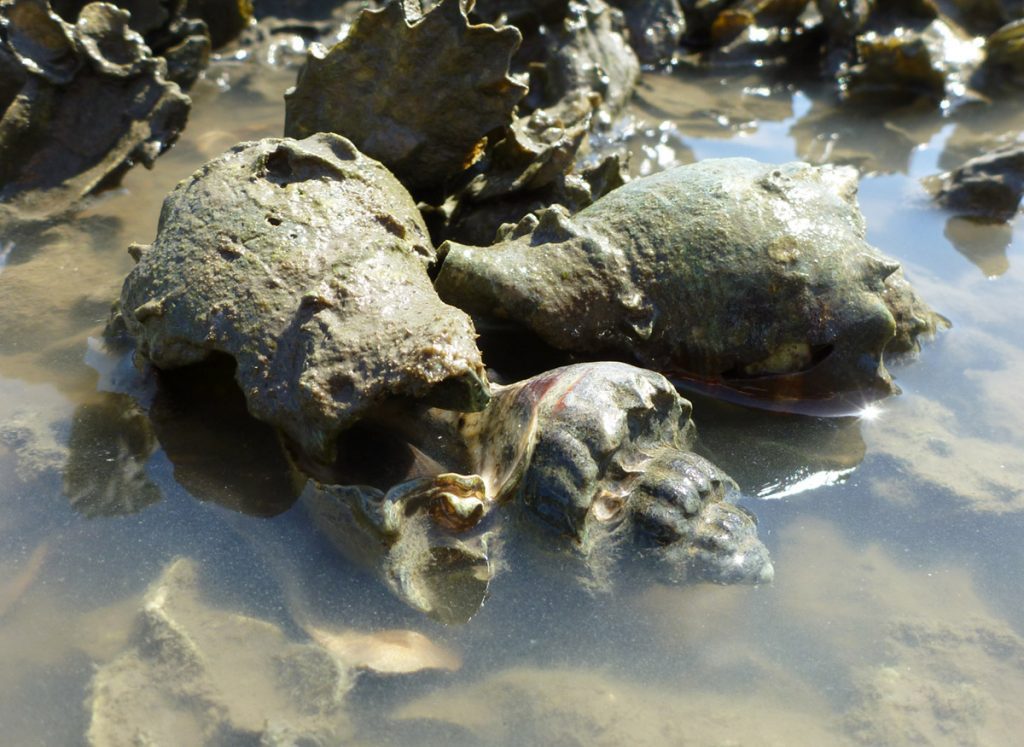
Atlantic oyster drill (Urosalpinx cinerea)
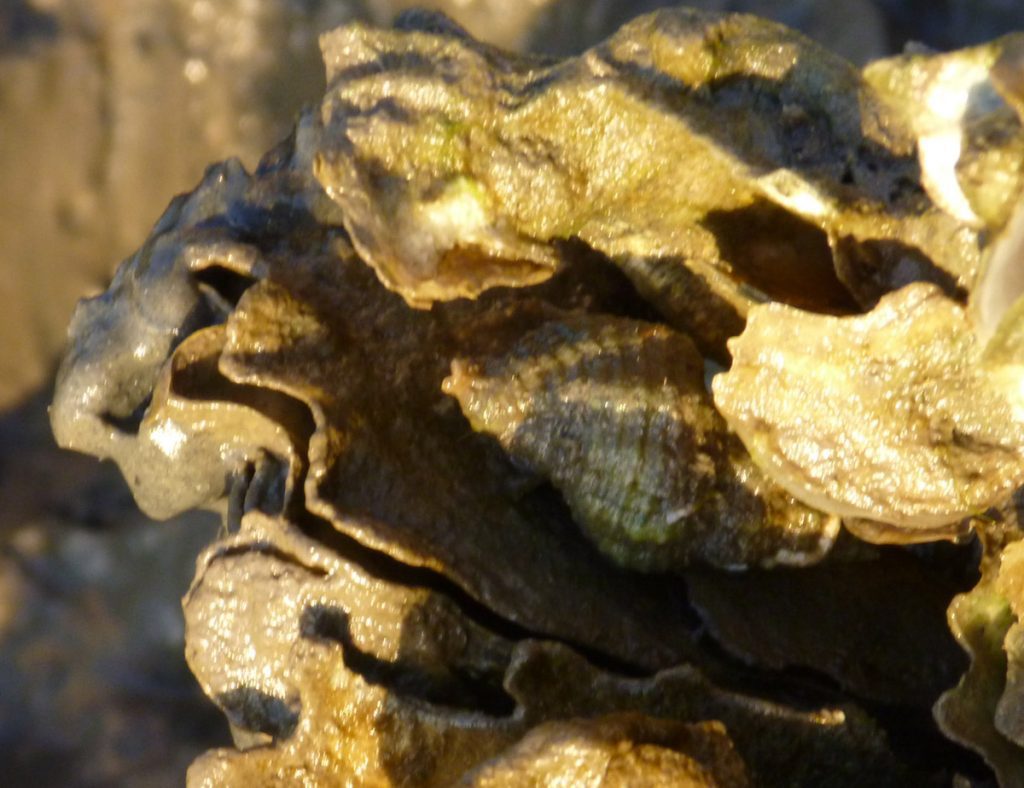
Oyster drills use their radula to bore holes into oysters and clams. This species is found on the Kimbro/ Hughes sites on Florida’s Atlantic coast. The larger southern oyster drill is a major consumer in subtidal Apalachicola Bay reefs.
Mud Crab (Panopeus sp.)
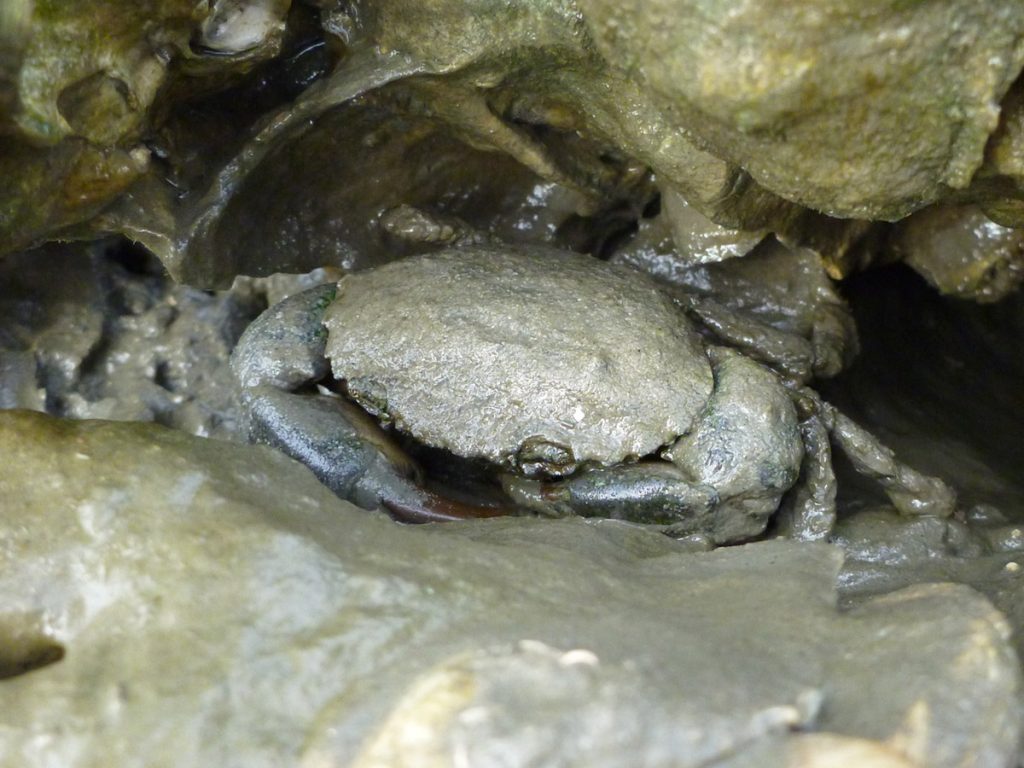
Panopeus species range in size from the miniscule herbstrii to larger individuals closer in size to stone crabs. Their hefty claws are ideal for tearing through young oyster shells to consume their meat. Mud crabs are in turn consumed by stone crabs, toadfish, catfish, and blue crabs.
Early on in their collaboration with WFSU, a question from producer Rob Diaz de Villegas spurred David and Randall to investigate whether mud crabs could hear. It turns out that they can in fact hear, and you can read about the process by which they discovered this in a 2014 post.
Banded Tulip (Cinctura hunteria)
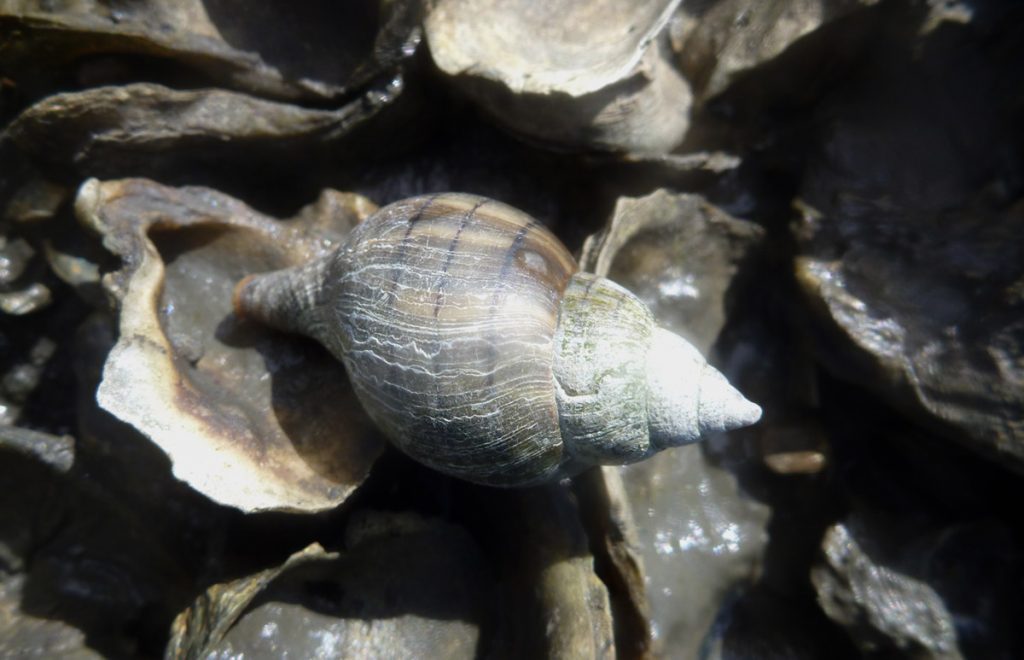
The banded tulip is a predator that feeds on oysters as well as bivalves such as clams.
Other Species in and Around the Reef
Snapping shrimp (Alpheidae family)
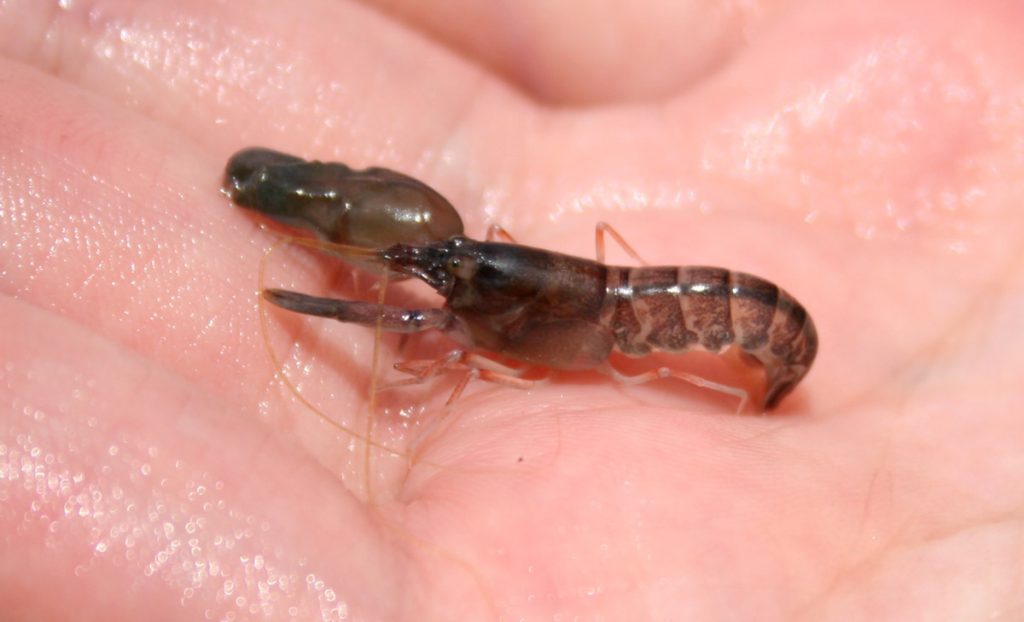
Snapping shrimp are known for the “popping” sound that they make with their claws. After discovering that mud crabs could hear, David Kimbro and Randall Hughes began recording oyster reef soundscapes. Snapping shrimp were the dominant sound in the recording. The pressure created by the pop is enough to kill a small fish, which is how it hunts for prey.
Striped mullet (Mugil cephalus)
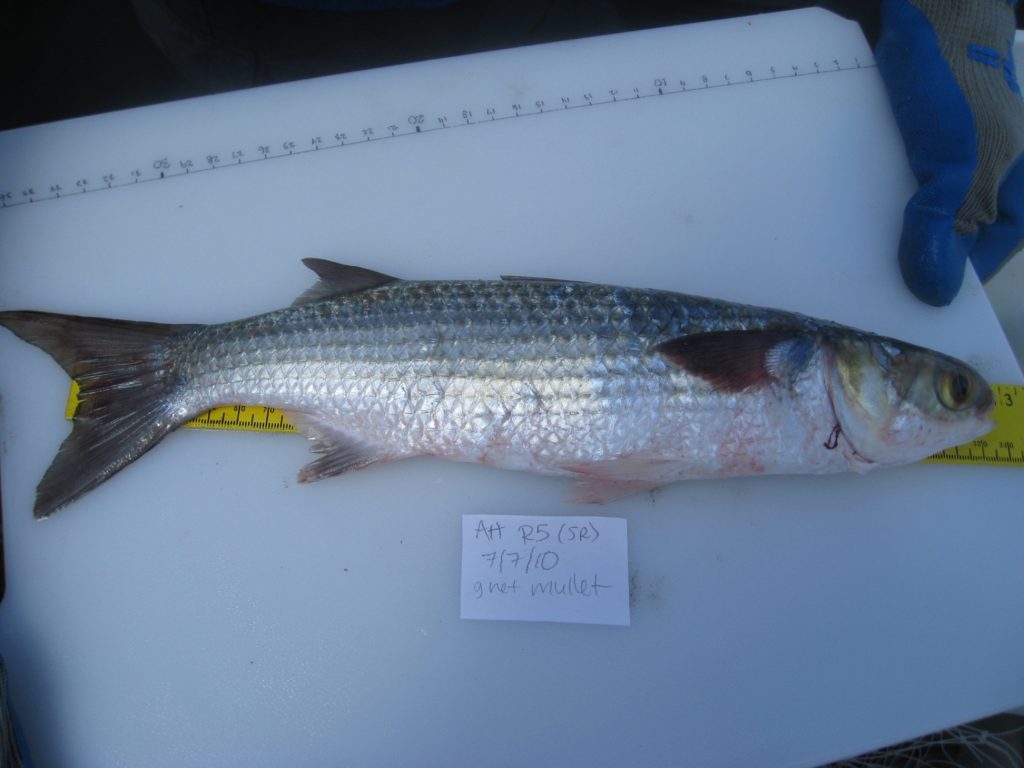
Striped mullet is an international fish, found along coastlines of every continent except Antarctica. Along the Forgotten Coast, mullet spend their juvenile years in salt marshes. There they find shelter from predators. As an adult, one of its main predators are humans, who value it as both food and bait. Mullet carrying roe are especially prized and are worth much more at fish markets
Lightning whelk (Busycon perversum, Sinistrofulgur perversum)
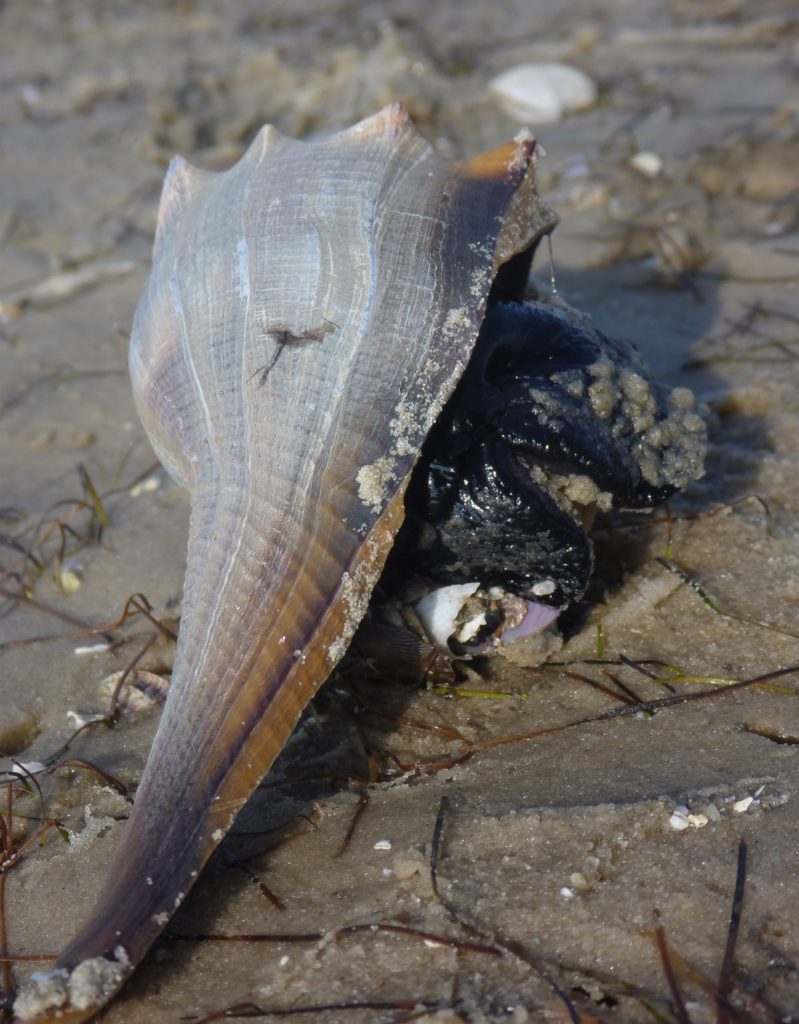
Like the crown conch, the lightning whelk uses its proboscis to pry bivalves open and suck out the flesh. The lightning whelk proboscis is not as big and muscular as a crown conchs; it feeds more on clams and mussels rather than oysters.
Lightning whelk shells are a common sight on north Florida coasts, whether they belong to live whelks, hermit crabs, or empty. Almost as commonly seen are their egg casings. Each capsule contains up to 99 lightning whelks.
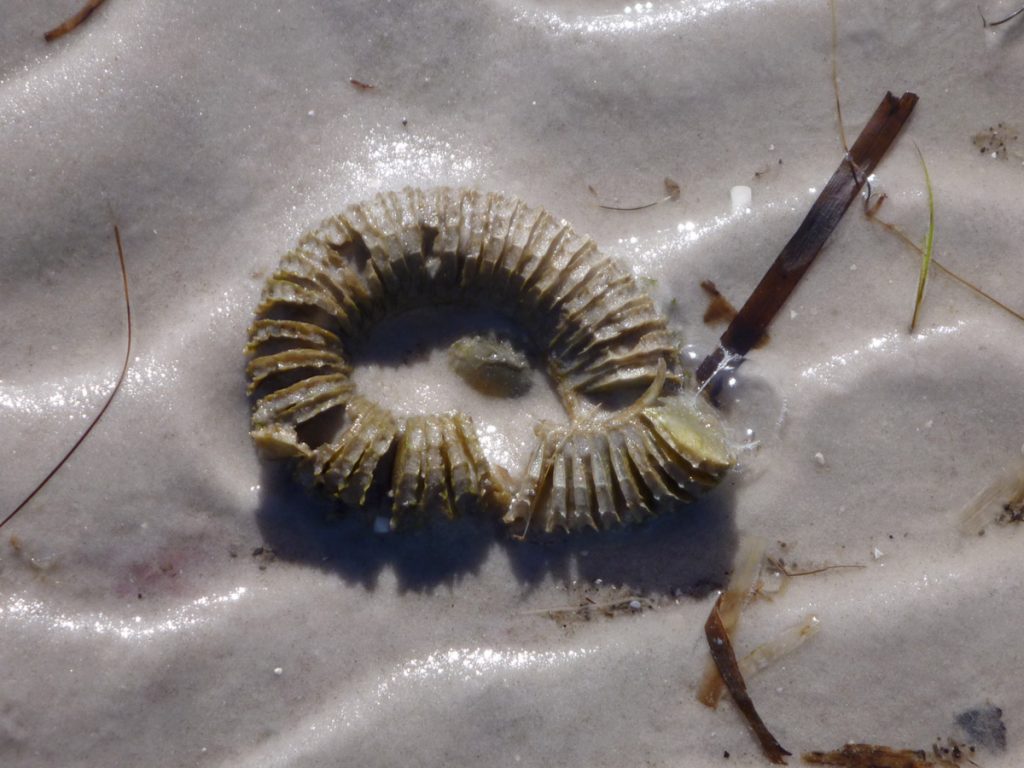
While most snail species have shells that whorl to the right (a dextral curve), lighting whelks are sinistral. Lightning whelks have long been of significance to native American cultures in the southeast. The Apalachee people, who once inhabited what is now Tallahassee, used whelks as medicine cups, and traded them with other native groups within the Mississippian trade network. One way the medicine cups were used was to imbibe the black drink, brewed from the leaves of the yaupon holly tree, on the night before playing the Apalachee ball game against rival villages.
Muscogee culture is related to that of the Apalachee; hailing from nearby along the Chattahoochee River in Georgia and Alabama. In 2018, we saw how Muscogee living in Tallahassee keep their culture alive, which includes the carving of medicine cups from lightning whelks.
Black drum (Pogonias cromis)
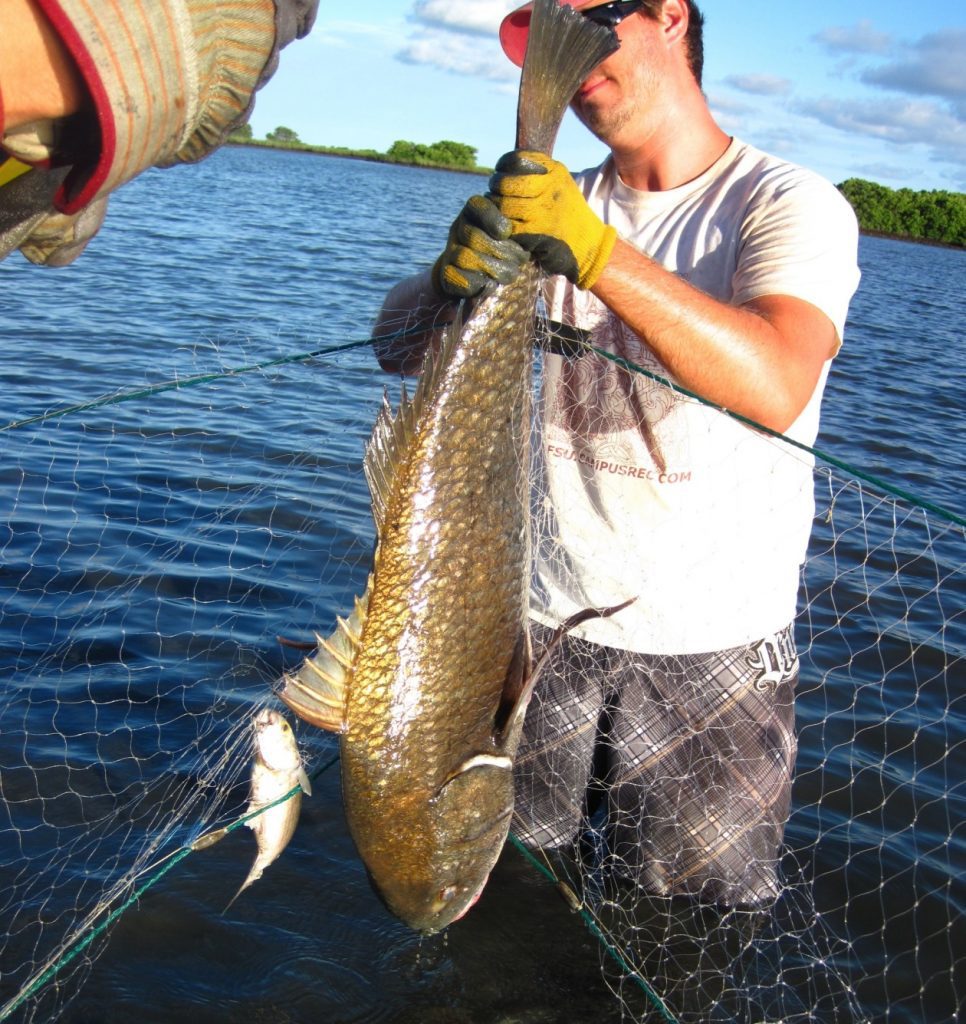
The largest of the drum family, the black drum is common in brackish waters such as those in which oyster reefs are found. The black drum eats crustaceans, mollusks, and fish.
Red Drum (Sciaenops ocellatus), also known as Channel Bass or Spottail Bass
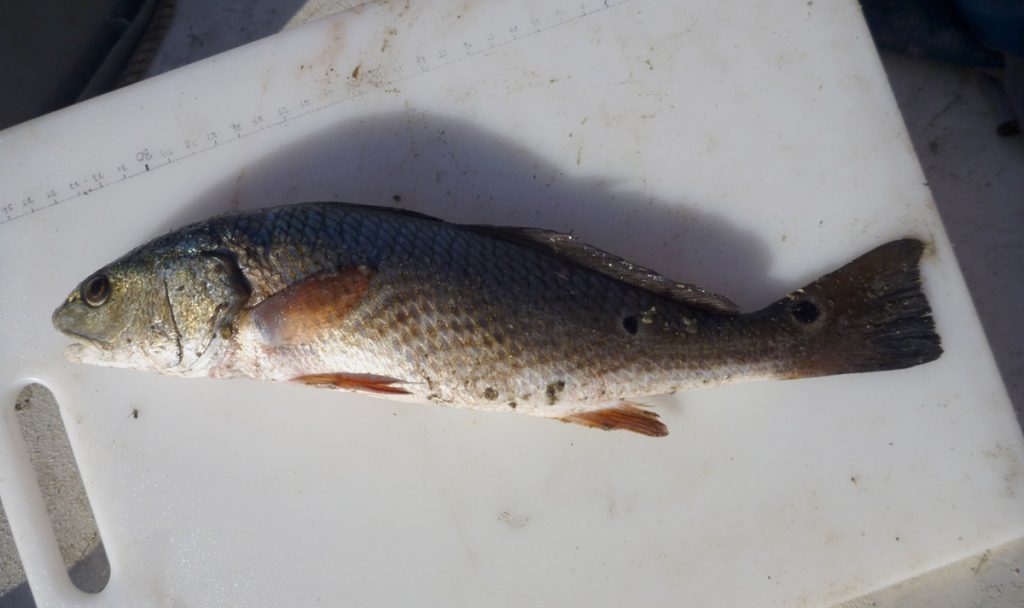
The Red Drum is very similar its close relative, the black drum, and both species are found around each other in brackish waters. The red drum is a popular catch for the sport fisherman, and is widely consumed by humans.
Red Snapper (Lutjanus campechanus)
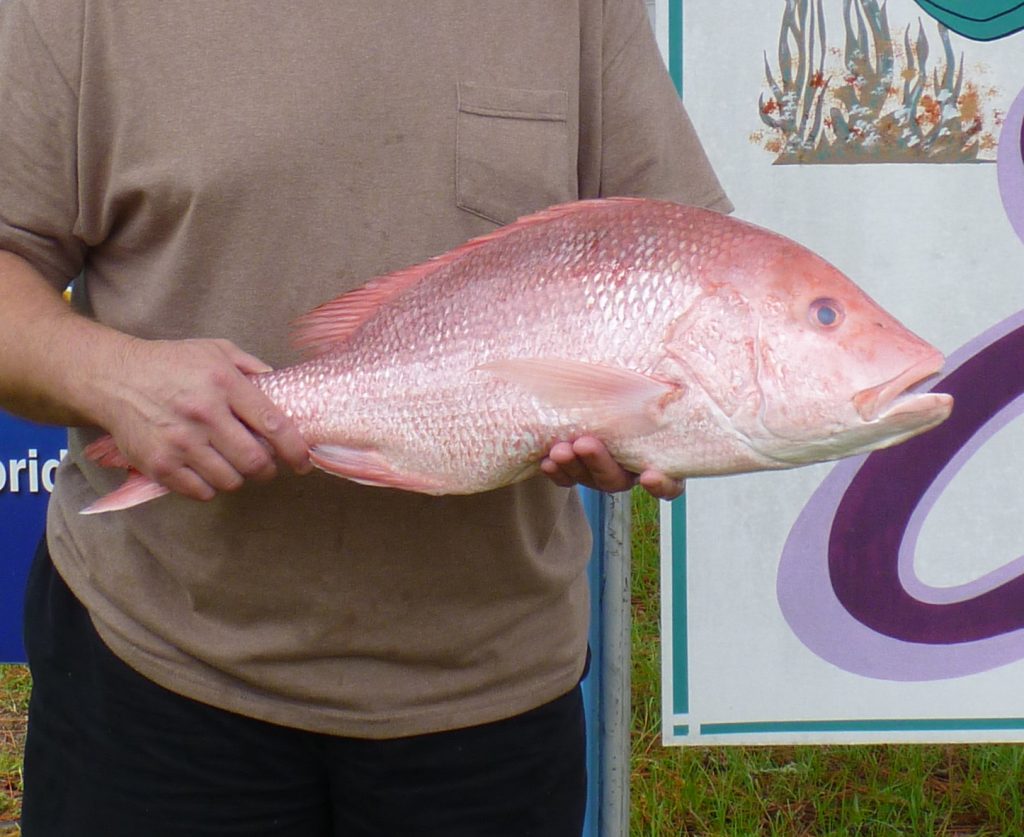
As juveniles, red snapper often use oyster reefs for refuge. It is a popular game fish, and commercially important as well.
Pinfish (Lagodon rhomboides)
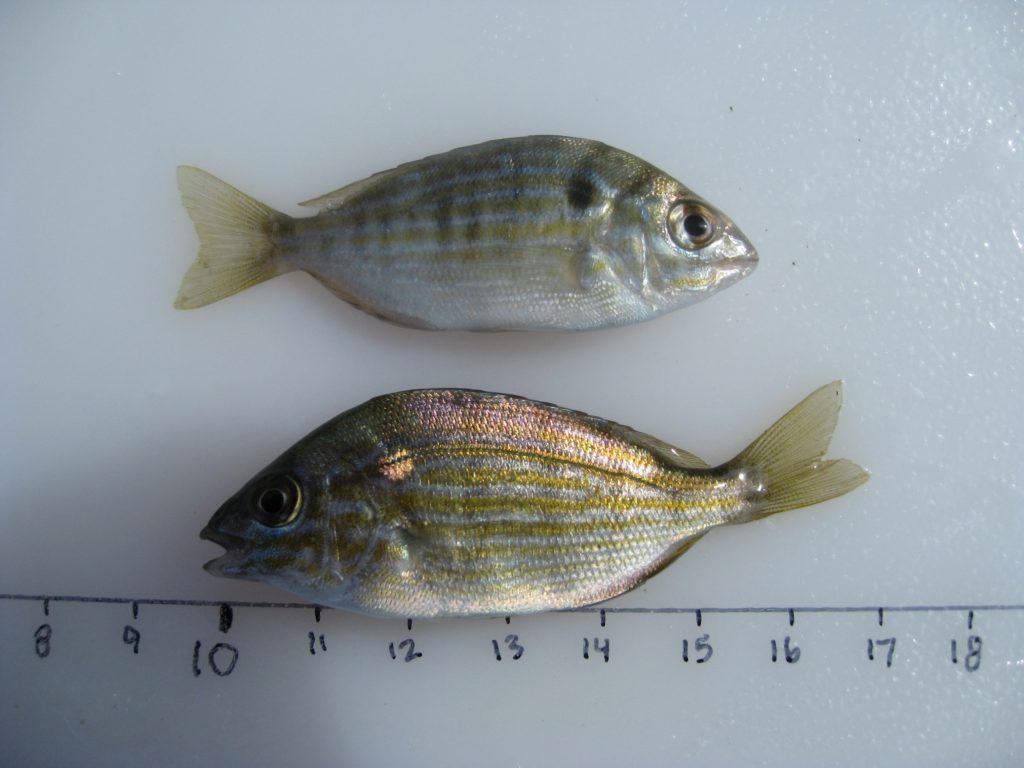
The pinfish gets its name from the sharp spines in its dorsal fin. It is a main food of the gag grouper, and is a popular bait fish. So, while it is not directly consumed by humans, it is a part of our own food web.
Silver Perch (Bairdiella chrysoura)
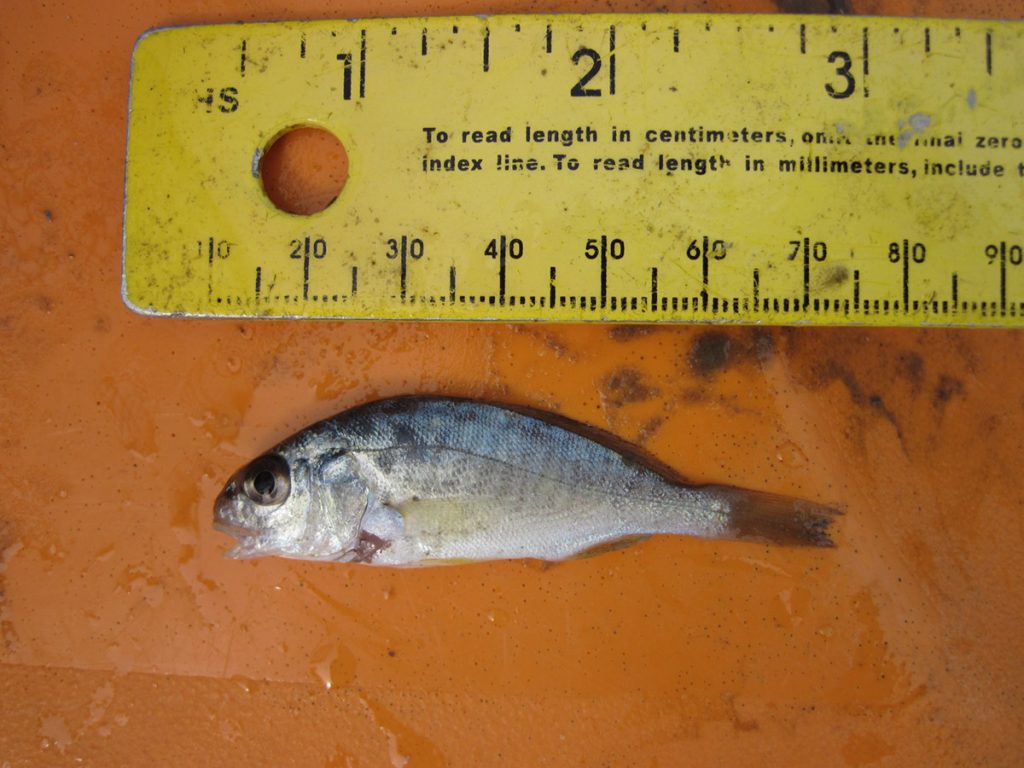
Thinstripe hermit crab (Clibinarius vittatus)
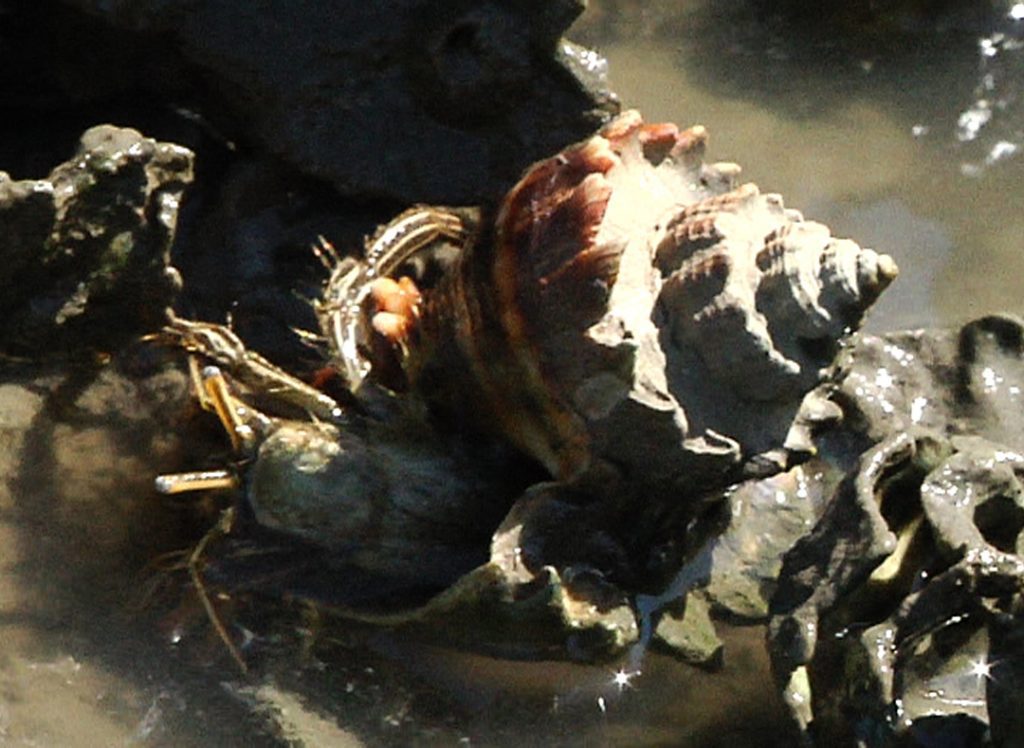
Hermit crabs occupy gastropod shells of all kinds, either finding them empty or attacking occupied shells. Dr. David Kimbro’s graduate student, Hanna Garland, had noticed that they were often a predator of crown conchs in the oyster reefs south of Saint Augustine. Those reefs had been overrun with the conchs. Read more about Hanna Garland’s hermit crab/ crown conch cage matches here.

